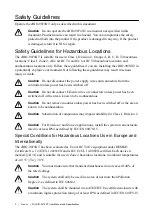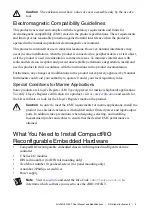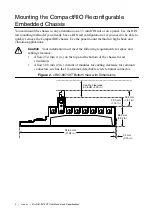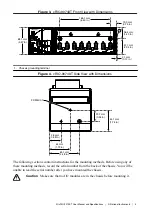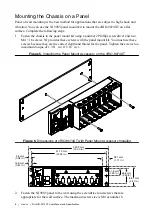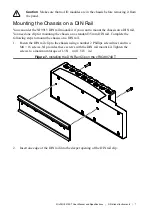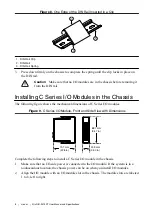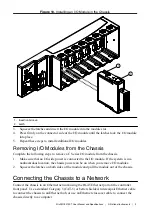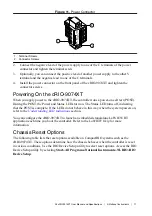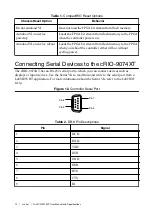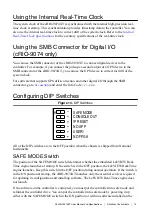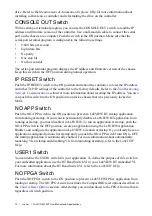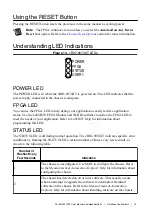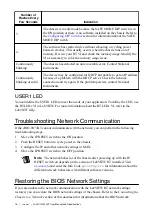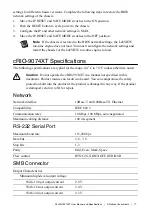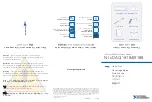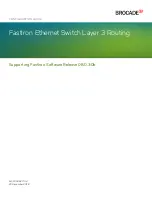
Safety Guidelines
Operate the cRIO-9074XT only as described in this document.
Caution
Do not operate the cRIO-9074XT in a manner not specified in this
document. Product misuse can result in a hazard. You can compromise the safety
protection built into the product if the product is damaged in any way. If the product
is damaged, return it to NI for repair.
Safety Guidelines for Hazardous Locations
The cRIO-9074XT is suitable for use in Class I, Division 2, Groups A, B, C, D, T4 hazardous
locations; Class I, Zone 2, AEx nA IIC T4 and Ex nA IIC T4 hazardous locations; and
nonhazardous locations only. Follow these guidelines if you are installing the cRIO-9074XT in
a potentially explosive environment. Not following these guidelines may result in serious
injury or death.
Caution
Do not disconnect the power supply wires and connectors from the
controller unless power has been switched off.
Caution
Do not disconnect I/O-side wires or connectors unless power has been
switched off or the area is known to be nonhazardous.
Caution
Do not remove modules unless power has been switched off or the area is
known to be nonhazardous.
Caution
Substitution of components may impair suitability for Class I, Division 2.
Caution
For Division 2 and Zone 2 applications, install the system in an enclosure
rated to at least IP54 as defined by IEC/EN 60079-15.
Special Conditions for Hazardous Locations Use in Europe and
Internationally
The cRIO-9074XT has been evaluated as Ex nA IIC T4 Gc equipment under DEMKO
Certificate No. 12 ATEX 1202658X and is IECEx UL 14.0089X certified. Each device is
marked II 3G and is suitable for use in Zone 2 hazardous locations, in ambient temperatures
of -40 °C ≤ Ta ≤ 70 °C.
Caution
You must make sure that transient disturbances do not exceed 140% of
the rated voltage.
Caution
The system shall only be used in an area of not more than Pollution
Degree 2, as defined in IEC 60664-1.
Caution
The system shall be mounted in an ATEX/IECEx-certified enclosure with
a minimum ingress protection rating of at least IP54 as defined in IEC/EN 60079-15.
2
|
ni.com
|
NI cRIO-9074XT User Manual and Specifications


